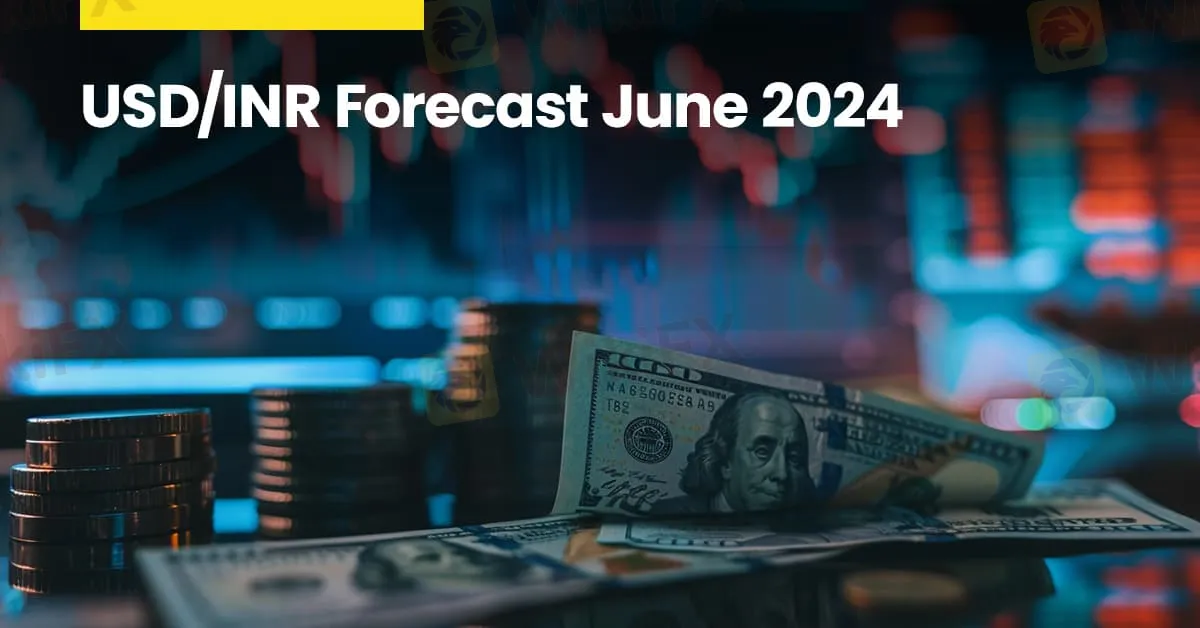简体中文
繁體中文
English
Pусский
日本語
ภาษาไทย
Tiếng Việt
Bahasa Indonesia
Español
हिन्दी
Filippiiniläinen
Français
Deutsch
Português
Türkçe
한국어
العربية
USD/INR Forecast June 2024
Abstract:According to the reports, the first two and a half weeks of May saw the USD/INR currency pair confined to a notably tight trading range. The pair faced robust resistance around the 83.5240 level, though there were occasional deviations. However, on May 17th, the USD/INR broke through the support level at approximately 83.39, which had held since May 6th, leading to a dip towards 83.2388.

According to the reports, the first two and a half weeks of May saw the USD/INR currency pair confined to a notably tight trading range. The pair faced robust resistance around the 83.5240 level, though there were occasional deviations. However, on May 17th, the USD/INR broke through the support level at approximately 83.39, which had held since May 6th, leading to a dip towards 83.2388.
On May 20th, the USD/INR tested the 83.1812 level before reversing to reach a high of around 83.3670 on Tuesday. As June approached, the currency pair traded near the 83.3200 mark amidst increased activity.
Intriguing Movements and RBI Influence
Recently, the USD/INR has been trading rapidly with a wide range, indicating heavy trading volume. While questions about the Rupee being a free-floating currency persist, the broader Forex market has adjusted its outlook on the U.S. Federal Reserve, anticipating a more dovish stance in the mid-term.
The Reserve Bank of India (RBI) has closely monitored and controlled the USD/INR value. The recent dip in the currency pair over the past week and a half is noteworthy. On the previous Friday, a low of 82.9775 was recorded, and despite a slight rebound, the USD/INR hovered around the 83.0000 level on Monday. Yesterday saw an upward movement, indicating a bullish trend. However, speculators should exercise caution with risk management due to potential RBI intervention.
Political and Economic Factors Influencing USD/INR
The results of the Indian national election, expected on June 4th, will significantly impact trading perceptions. While preliminary results might be available on Tuesday, the final tally may take until June 5th. The outcome of the Lok Sabha elections will influence financial institutions' reactions. Traders should prepare for potential volatility in the USD/INR early next week, though the RBI is likely to prevent extreme volatility.
In addition to the election results, the U.S. will release important growth and inflation data later this week. Thursday's GDP results and Friday's inflation numbers will affect Forex market sentiment. The question remains whether the USD/INR will react to these developments within its established trading range.
USD/INR Outlook for June 2024
The speculative price range for the USD/INR in June 2024 is between 82.9300 and 83.5600. The forthcoming Indian election results will influence sentiment surrounding the USD/INR. A significant influx of opposition members in the Lok Sabha could mean the ruling government might need to adopt broader decision-making processes, which financial institutions might not view negatively.
Economic stability in India is crucial. The USD/INR has maintained a tight trading range compared to most other major currency pairs. A sudden shift to a fully floating USD/INR without potential RBI intervention is unlikely. Traders should continue to leverage technical support and resistance levels while exercising patience and utilizing take-profit and stop-loss orders to navigate this intriguing value range.
Understanding the Indian Rupee
The Indian Rupee, issued by the Reserve Bank of India (RBI), is India's official currency. It became the national currency in 1947, replacing the currencies of the previously autonomous states. Historically pegged to the British pound due to colonial ties, the Rupee was delinked from the pound in September 1975 as India's trade diversified.
The Rupee now operates under a free-floating exchange rate system influenced by market supply and demand. The RBI ensures stable conditions in the foreign exchange market by monitoring currency and financial market movements closely and intervening when necessary to maintain the Rupee's price stability.

Disclaimer:
The views in this article only represent the author's personal views, and do not constitute investment advice on this platform. This platform does not guarantee the accuracy, completeness and timeliness of the information in the article, and will not be liable for any loss caused by the use of or reliance on the information in the article.
Read more

Justice Served: Illegal Investment Scheme Ends in RM28 Million Repayment
The Kuala Lumpur High Court has ruled that a Singaporean businessman, Chan Cheh Shin, must return RM28 million to 122 Malaysian investors after the court determined that his investment operations were conducted illegally.

RM900,000 Scammed: The Hidden Dangers of Online Investment Schemes
A 53-year-old factory manager from Malaysia has fallen victim to an online investment scam, losing over RM900,000 of her savings. This case underscores the growing threat of online scams preying on unsuspecting individuals.

Doo Group Expands Its Operations with CySEC License
Doo Financial, part of Doo Group, receives a CySEC license, allowing FX/CFD services in Europe. This strengthens its global presence and regulatory standards.

Exness: Revolutionizing Trading with Cutting-Edge Platforms
Exness offers traders seamless experiences with its Exness Terminal and Exness Trade app, providing flexibility, advanced tools, and low-cost trading.
WikiFX Broker
Latest News
BSP Shuts Down Uno Forex Over Serious AML Violations
ACY Securities Expands Global Footprint with South Africa Acquisition
Why Even the Highly Educated Fall Victim to Investment Scams?
Warning Against Globalmarketsbull & Cryptclubmarket
Rupee gains against Euro
Tokyo Police Arrest 4 for Unregistered FX Trading Scheme
Axi Bids AUD 52M to Acquire Low-Cost Broker SelfWealth, Outbidding Competitor Bell Financial
Crypto Influencer's Body Found Months After Kidnapping
US Regulators Tighten Oversight on Bank Anti-Money Laundering Efforts
Doo Group Expands Its Operations with CySEC License
Currency Calculator


